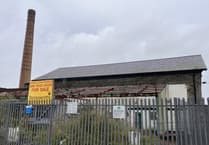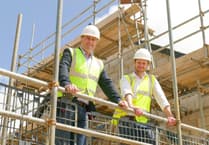The Plymouth and South West Devon Joint Local Plan would see 3,000 more homes built in the South Hams than are actually needed, a former district councillor has claimed.
The plan, which is now in the final stage of public consultation, has been drawn up by South Hams District Council, Plymouth City Council and West Devon Borough Council.
Once adopted it will dictate where and how much development takes place across the area, right up to 2034.
Now Modbury parish councillor and former Liberal Democrat South Hams District Council member Mark Lawrence has dug down into the background papers on which the JLP is based.
Cllr Lawrence has calculated the plan includes thousands more homes than are actually needed in the South Hams, in part because up-to-date forecasts of growth in the number of households made by Devon County Council have not been taken into account.
But, Cllr Lawrence says, central Government policy aimed at London and the South East, and mistakes by other local authorities have made the situation even worse.
Some of the 3,000 extra houses are to satisfy under-provision in West Devon, he says, where the local authority has not allocated sufficient houses to meet the new growth forecasts.
He also says the South Hams is paying the price for having such a high rate of second homes, by having even more houses allocated - as policy makers assume a certain percentage will be vacant.
And as the South Hams is an area where housing affordability is a problem, a ’market uplift’ of an additional 25 per cent of homes has been added in an attempt to boost supply and bring prices down.
Cllr Lawrence has posed questions to SHDC and the other local authorities as a result of his findings. He said: "Why has no attempt been made to remove some of the allocations?
"Why weren’t the councillors on SHDC told about this before they voted to support the JLP?
"The JLP is clearly ’unsound’ in this respect, and the inspector should act to remove certain of the allocations."
He added: "In total 10,600 houses are planned for the South Hams, including Sherford, for the next 20 years. At £1,500 per house per annum for six years this will bring £4.5 million a year into the coffers of the district council via the New Homes Bonus.
"Is this why they are happily acquiescing with the over-development of our beautiful countryside?"
Fellow Liberal Democrat, SHDC councillor for Newton and Yealmpton and leader of the opposition group at the Conservative controlled council Keith Baldry said: "Mark Lawrence is an experienced and acknowledged expert statistician. Everyone should be grateful to him for the work he has put into the public arena on the background papers to the Joint Local Plan.
"All the South Hams Liberal Democrat district councillors voted against the plan, primarily because we were opposed to thousands of houses being built in our beautiful countryside, which did not include homes local workers could afford.
"They will be highly priced unaffordable houses; second homes and holiday homes. The plan reduces the so called affordable element from 50 per cent to 30 per cent.
"The use of the term affordable is totally misleading. To call a three bed property costing £300,000 affordable is a lie.
"Despite Lib Dem opposition the JLP was approved by the Conservative majority. Mark Lawrence’s research indicates that when the vote was taken, councillors had not been given the full picture.
"There are 3,000 more houses in the South Hams figures than are necessary.
"It is disgraceful that South Hams councillors took a decision based on incomplete and misleading information. Many communities like Modbury, Chillington and Woolwell are being swamped with unnecessary building."
A spokesman for the three local planning authorities said: “We remain comfortable with the methodology we have used in preparing the joint local plan, which is in accordance with government guidance and the National Planning Policy Framework. We also believe the evidence we have used is robust in support of the judgements we have made in the plan.
"The current statutory consultation stage allows for representations to be made to an independent government inspector who will consider the soundness of the plan later on this year. We therefore encourage interested parties to set out their views to the Inspector during the consultation, which ends on April 26.”




